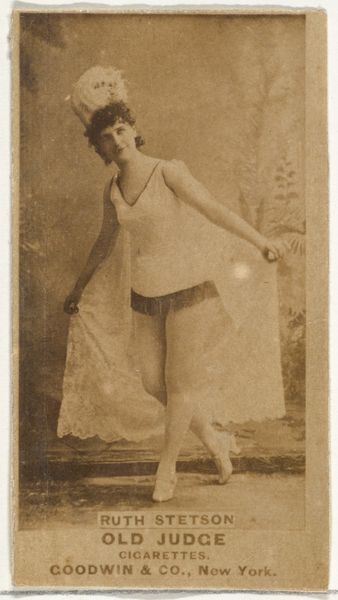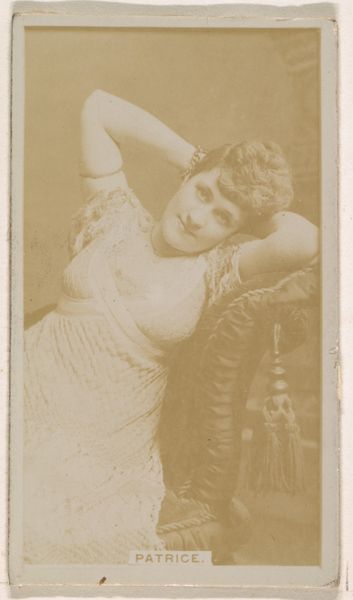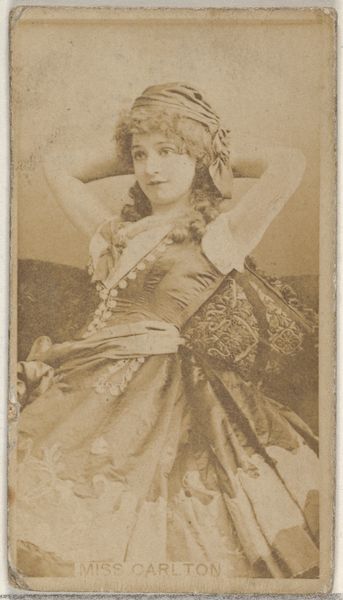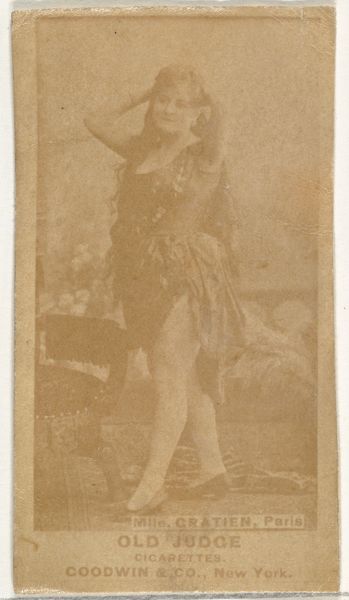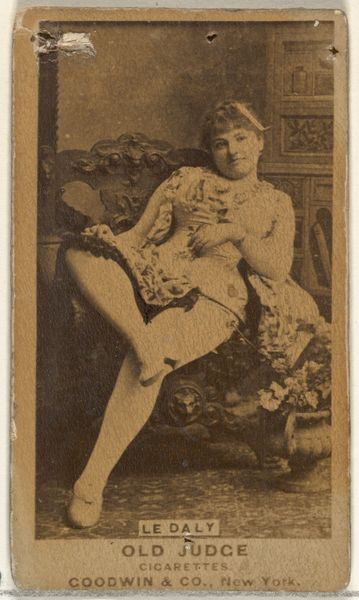
Miss Elvin, from the Actors and Actresses series (N145-8) issued by Duke Sons & Co. to promote Duke Cigarettes 1890 - 1895
0:00
0:00
print, photography
#
portrait
# print
#
photography
Dimensions: Sheet: 2 11/16 × 1 3/8 in. (6.8 × 3.5 cm)
Copyright: Public Domain
Editor: This is "Miss Elvin", a promotional print for Duke Cigarettes from the late 1890s. I'm struck by the delicate texture in her dress and the dreamy sepia tone. What formal elements stand out to you in this portrait? Curator: Immediately, the contrasting textures present themselves. The softness of Miss Elvin’s skin against the rough implied texture of the backdrop. Note also how the artist uses a limited tonal range. The photograph relies almost exclusively on subtle shifts in value, rather than stark contrasts, creating an overall sense of harmony and balance, don't you think? Editor: Yes, I see what you mean. The muted tones definitely contribute to the work's dreamlike quality, avoiding strong lines. Can you elaborate on the role of composition here? Curator: The composition utilizes a subtle diagonal axis, beginning with the tilt of Miss Elvin's head, flowing down through her arm, and echoed in the fall of her garment. The placement of "Elvin" as text provides an important baseline, rooting her floating image to the reality of the composition. Editor: Interesting, I never would have noticed all those formal subtleties on my own. Do you find the work's success is derived mostly from these formal qualities? Curator: Absolutely. While the subject matter has its place, ultimately, it's the composition, texture, and tonality that define its artistic merit. The interplay of these elements results in an artwork greater than the sum of its parts. Editor: That’s a really helpful perspective. I am seeing the relationship of visual elements now in a completely different light. Curator: Indeed. Appreciating those building blocks enhances any art-viewing experience.
Comments
No comments
Be the first to comment and join the conversation on the ultimate creative platform.



